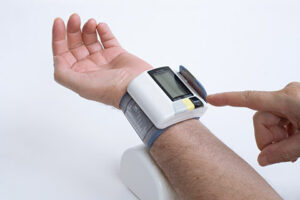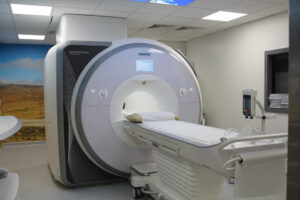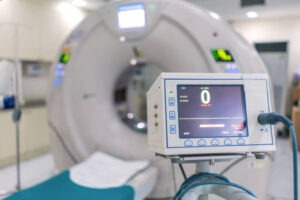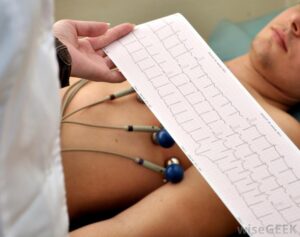The human heart, a tireless and indispensable organ, plays a central role in sustaining life by pumping oxygenated blood throughout the body. The significance of maintaining a healthy heart cannot be overstated, as it directly influences overall well-being and longevity. A robust cardiovascular system not only ensures optimal organ function but also significantly reduces the risk of cardiovascular diseases, the leading cause of morbidity and mortality globally.
What is a Treadmill Exercise Test (TMX)?
TMX, or Treadmill Exercise Test, is a cardiovascular stress test designed to assess the heart’s performance under physical exertion. It is a valuable diagnostic tool, especially in revealing potential issues that may not be apparent during rest.
How TMX Works
The procedure involves the individual walking or running on a treadmill while connected to an Electrocardiogram (ECG) machine. As the exercise intensity gradually increases, the ECG monitors the heart’s response, providing insights into its performance under stress. This dynamic evaluation helps uncover latent cardiovascular conditions.
TMX is crucial in cardiovascular investigations by assessing fitness levels and identifying potential heart issues. It goes beyond static assessments, offering real-time data on heart rate, rhythm, and ECG changes during exercise. This makes TMX an indispensable tool for comprehensive heart health evaluations, aiding in the proactive detection and management of cardiovascular conditions.
The TMX Procedure
Pre-Test Preparation
Individuals can expect a brief guidance session before the Treadmill Exercise Test (TMX). This may include information on fasting, avoiding caffeine, and potential medication adjustments. Understanding what to expect and any necessary preparations contributes to a smoother testing experience.
Monitoring Heart Activity
Throughout the TMX, heart activity is continuously monitored. Electrodes attached to the chest transmit real-time data to an Electrocardiogram (ECG) machine. This allows healthcare professionals to track changes in heart rate rhythm and detect any abnormalities that may surface during the exercise. Blood pressure and other vital signs are also closely observed.
Safety Measures
Safety is paramount during the TMX procedure. Trained healthcare professionals closely supervise the test, ready to intervene if necessary. Emergency equipment is available on site, and the test can be terminated if the participant experiences discomfort, significant changes in vital signs, or exhibits concerning symptoms. These safety measures ensure a controlled and secure testing environment.
Interpreting TMX Results
Normal vs. Abnormal Responses
Understanding Treadmill Exercise Test (TMX) results involves differentiating between expected and concerning reactions during the exercise. Normal responses include an anticipated increase in heart rate and blood pressure. Abnormalities may manifest as irregular heart rhythms, chest pain, or significant changes in vital signs, signalling potential issues warrant further investigation.
Identifying Cardiovascular Issues
TMX results can provide valuable insights into various cardiovascular issues. Abnormal ECG patterns, ST-segment changes, or exercise-induced symptoms may indicate conditions such as coronary artery disease or arrhythmias. Identifying these issues early through TMX allows for timely intervention and management.
Combination with Other Tests
TMX serves as a valuable piece of the puzzle in the realm of heart investigations. Its dynamic nature complements static tests like ECGs and imaging studies. Collaborating with other diagnostic tools creates a more comprehensive understanding of cardiovascular health. When combined with other tests, TMX’s ability to unveil subclinical conditions contributes to a thorough and accurate diagnosis, guiding healthcare professionals in crafting effective treatment plans.
Common Uses of Treadmill Exercise Test (TMX)
The Treadmill Exercise Test (TMX), a stress test, is a valuable diagnostic tool used in cardiology to assess cardiovascular function and detect various heart-related issues. Here are some common uses of TMX:
Evaluating Exercise Capacity
TMX helps measure an individual’s exercise capacity and endurance. This information is crucial for assessing overall cardiovascular fitness and can be particularly relevant in guiding exercise prescriptions for cardiac rehabilitation.
Detecting Coronary Artery Disease (CAD)
TMX is often employed to identify signs of coronary artery disease by inducing controlled stress on the heart. Changes in the electrocardiogram (ECG) and blood pressure during exercise can indicate insufficient blood flow to the heart muscle, helping diagnose CAD.
Assessing Heart Rhythm
The test monitors heart rhythm during physical activity, making it an effective tool for detecting arrhythmias that may not be apparent at rest. Abnormalities in heart rate and rhythm during exercise can indicate underlying cardiac issues.
Evaluating Treatment Efficacy
For individuals with known heart conditions, TMX can be used to assess the effectiveness of medications, interventions, or surgical procedures in improving exercise tolerance and overall cardiovascular health.
Risk Stratification
TMX is valuable in stratifying individuals into different risk categories based on their response to exercise. This information assists healthcare providers in determining the level of cardiovascular risk and tailoring treatment plans accordingly.
Monitoring Cardiac Rehabilitation
TMX plays a crucial role in monitoring the progress of individuals undergoing cardiac rehabilitation. Regular tests help track improvements in exercise capacity and overall cardiovascular health.
Screening Asymptomatic Individuals
In some cases, TMX is used as a screening tool for asymptomatic individuals at risk of heart disease due to factors such as age, family history, or other risk factors. This allows for early detection and intervention.
Importance of Regular Treadmill Exercise Test (TMX) Checks
Regular TMX checks offer several benefits in the proactive management of cardiovascular health:
Early Detection of Heart Issues
Routine TMX checks provide early detection for heart-related problems, allowing for timely intervention and prevention of more serious cardiac events.
Monitoring Treatment Progress
For individuals undergoing cardiac treatment or rehabilitation, regular TMX checks help healthcare professionals monitor progress and make necessary adjustments to treatment plans.
Tailoring Exercise Programs
Information obtained from TMX can be used to customise exercise programs for individuals, ensuring that the intensity and duration of exercise are appropriate for their cardiovascular capacity.
Risk Reduction
By identifying and addressing cardiovascular risk factors early on, regular TMX checks reduce overall cardiovascular risk, leading to improved long-term heart health.
Enhancing Quality of Life
Regular TMX checks empower individuals to actively participate in managing their heart health. This can lead to an improved quality of life, increased confidence, and a sense of control over one’s well-being.











